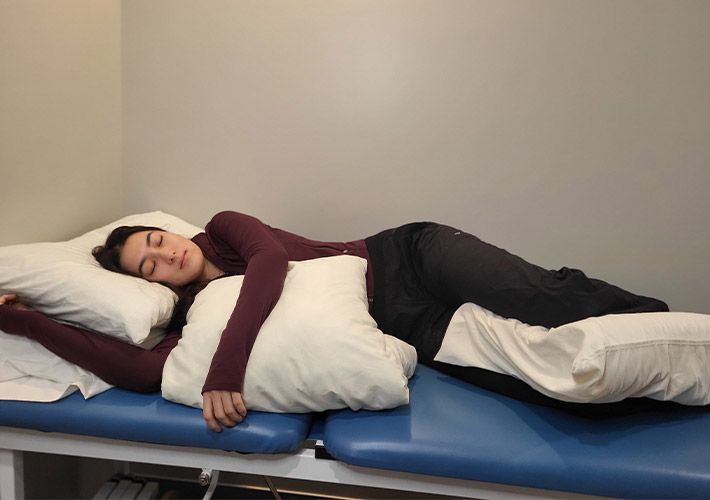Fall Prevention in the Elderly: A Guide to Staying Safe and Healthy

As we age, the risk of falling increases significantly, leading to potential injuries and complications that can impact overall quality of life. For the elderly, falls are a serious concern, often resulting in fractures, decreased mobility, and even increased mortality. At Peak Performance, we emphasize the importance of fall prevention and maintaining a healthy lifestyle to keep your body strong and resilient.r game.
Why Are the Elderly at Increased Risk?
Several factors contribute to the heightened fall risk among the elderly:
- Decreased Bone Density:
Osteoporosis, a condition characterized by weakened bones, is common in older adults. As we age, our bodies lose bone mass and this makes bones more susceptible to fractures even from minor falls. Women are more commonly affected by osteoporosis than men however both will lose bone density with age.
- Muscle Weakness: With age, muscle mass and strength decrease, reducing stability and balance. This is natural with age but living a sedentary lifestyle can increase the rate of atrophy and degeneration.
- Medication Side Effects: Some medications can cause dizziness or drowsiness, increasing the likelihood of falls. Always talk with your doctors about potential side effects of medications and be aware if certain medications make you more susceptible to instability.
- Sensory Decline: Vision and hearing impairments can make it harder to navigate safely. Talk with your doctor if you’ve noticed a decline in your ability to see or hear clearly.
- Chronic Conditions: Conditions like arthritis, diabetes, and Parkinson’s disease can affect coordination and balance. Arthritis can cause stiffness of the joints that make mobility difficult. Diabetes can lead to neuropathy in the feet which is a numbness or tingling that may make it harder to be aware of where you’re standing or stepping. Lastly, Parkinson’s disease characteristically has a shuffling gait in which patients have a tough time lifting their legs up making the clearance of steps or objects difficult.
Consequences of Falls
The consequences of falling can be severe, particularly for the elderly:
- Fractures: Hip fractures are especially common and can lead to long-term disability. According to the CDC, over 300,000 older adults are hospitalized for hip fractures each year.
- Infection Risk: Hospitalization following a fall increases the risk of infections, which can complicate recovery.
- Loss of Independence: Injuries from falls often result in a decreased ability to perform daily activities, leading to a loss of independence.
- Increased Mortality:
Falls are the leading cause of injury-related death among those aged 65 and older.
Home Modifications to Decrease Fall Risk
Making changes in the home environment can significantly reduce the risk of falls:
- Install Grab Bars and Handrails: In bathrooms and along staircases to provide support.
- Improve Lighting: Ensure all areas of the home are well-lit to prevent tripping over unseen obstacles.
- Remove Clutter: Keep floors clear of objects and secure loose rugs to prevent tripping.
- Non-Slip Mats: Place these in the bathroom and kitchen where floors can be slippery.
- Adjust Furniture: Arrange furniture to create clear pathways and avoid sharp edges.
Exercises and Lifestyle Changes
Incorporating regular exercise and making lifestyle changes can help improve strength, balance, and overall mobility:
- Body-Weight Functional Movements: Exercises like squats, lunges, and step-ups can enhance muscle strength and endurance.
- Balance Work: Practice standing on one leg, heel-to-toe walks, and using a balance board to improve stability. Also practice standing up from sitting and laying as well as practicing getting up from the floor.
- Postural Changes: Focus on maintaining good posture to enhance alignment and reduce the risk of falls.
- Bone Density Maintenance: Weight-bearing activities like walking, climbing stairs, and light resistance training can help maintain bone density.
- Movement: Encourage daily movement to keep joints flexible and muscles strong. Even simple activities like walking or gardening can make a difference.
The Role of Chiropractic and Massage Care
Incorporating regular exercise and making lifestyle changes can help improve strength, balance, and overall mobility:
- Body-Weight Functional Movements: Exercises like squats, lunges, and step-ups can enhance muscle strength and endurance.
- Balance Work: Practice standing on one leg, heel-to-toe walks, and using a balance board to improve stability. Also practice standing up from sitting and laying as well as practicing getting up from the floor.
- Postural Changes: Focus on maintaining good posture to enhance alignment and reduce the risk of falls.
- Bone Density Maintenance: Weight-bearing activities like walking, climbing stairs, and light resistance training can help maintain bone density.
- Movement: Encourage daily movement to keep joints flexible and muscles strong. Even simple activities like walking or gardening can make a difference.
Bethany Wolcott
D’Youville Chiropractic ‘26












